
How I mowed hay in my youth. Photo Powerhouse Museum
Anyone who has mowed fields for hay hates vetch… wild pea. It binds up the machinery and a lot of livestock won’t eat it. That’s a lose lose all around unless the vetch is Lathyrus tuberosus.
A decade of my life was spent haying with just such a mower above. I know every part of it intimately, personally, mechanically, greasily, irritatingly… Whether pulled by horses or a tractor the larger wheels turned a lateral shaft which changed the circular motion via a wooden “pitman” to a horizontal movement, a six-foot blade of piranha teeth swishing back and fourth through the sicklebar. Whenever you hit a patch of vetch the resistance of the stems was more than the mechanical power to cut through them. That’s when one of two things would happen. The ash pitman (the stick in the lower middle, above and right of the small wheel) would splinter, or if the pitman was made of sterner stuff, the small wheel would trigger a spring release and the entire left side of the mower in front of the big back wheel would break free and swing back like a broken arm. This required stopping, cleaning the vetch from the sicklebar bar, then backing the entire contraption until the sicklebar bar snapped back into place. If the pitman broke it was the end of haying for that day, the evening spent in repairs. The bane of mowing hay was either vetch, or, ground hornets who were not happy when you cut off the top of their home.
Vetch…. legumes — peas and beans if you will permit the common grouping — land all over the foraging spectrum from edible to toxic to this part edible and that part not. Thus it is with the Lathyrus tuberosus (LAY-thigh-russ two-burr-OH-sus.) The seeds are toxic in quantity, the crisp cooked roots are delicious on par with sweet chestnuts. Raw they have more of a pea flavor. It makes one wonder how a plant once esteemed for its tasty tuber is now a noxious weed in many places… maybe haying had something to do with it. Another issue with this “invasive” is what do we call it? Tuber Vetchling, Earthnut Pea, Aardaker, Tuberous Sweetpea, Tanotte, Gland-de-terre, Gesse tubéreuse, châtaigne de terre, Fyfield Pea, Pebble Pea, Heath Pea, Pea Earth Nut, Earth Chestnuts, Dutch Mice, Earth Mouse. I like Dutch Mice and there are several Earthnuts/Chestnuts out there but let’s go with Tuberous Sweetpea. That is reasonably descriptive and accurate.
The Tuberous Sweetpea is native to Eurasia but is also found across much of northern North America. Cultivated since the 1600’s many consider it an “antique vegetable” once popular but now passe. That’s not really accurate. In taste tests the Tuberous Sweetpea always rates high and numerous plans have been made to make it a commercial crop. The problem is the plant does not agree to be domesticated. A consistent crop is difficult to maintain so it has not become a commercial staple. That’s doesn’t mean me and thee can’t harvest a lot of it and enjoy it, or even raise it. The roots can be boiled or roasted. Some also eat the root raw though it might be mildly toxic that way. There is also “lathyrism” to consider.
Some members of this large genus — Lathyrus sativus for example — have a toxic amino acid in the seeds that can cause a nerve disease if eaten in large amounts. While some caution is advised that “large amount” is when the seeds are 30 to 50 percent of ones diet. Not exactly a problem for most. Also edible are the seeds and young pods of the Lathyrus japonicus ssp. matitimus, with the same caution. However note only the root of the Lathyrus tuberosus is eaten, preferably cooked. It’s also used to favor some scotch whiskey. The root of the Lathyrus linifolius, “knappers” are also eaten. I have not been able to substantiate that the roots of the Lathyrus amphicarpus are edible.
To reiterate the seeds of Lathyrus species — there are 187 of them — are toxic particularly when consumed often and in large quantities. The tubers of the Lathyrus tuberosus were a common food in Europe often sold in produce markets particularly in France under the name “macusson.” Botanically Lathyrus is from the Greek Lathyros which is an old name for pea. Tuberosus is Dead Latin meaning tuberous, referring to the thickened roots.
Green Deane’s Itenized” Plant Profile: Tuberous Sweetpea
INDENTIFICATION: Lathyrus tuberosus: Perennial herb with nut-sized tubers, 12 to 32 inches high, stem limp, sometimes climbing, bristly, wingless, hairless. Flower irregular, rose red if not crimson, five petals standard pea blossom, lateral two petals the ‘wings’, the lower two petals united to form the ‘keel’, overall shape of corolla being butterfly-like. Stamens 10, strong fragrance. Leaves alternate, stalked, elliptic–lanceolate, blunt, no teeth, bluish green. Fruit long, flat, brown pod with three to six seeds. Tubers can be up to 16 inches deep. Oh, by the way you will read that the plant’s stipules (dwarfed petals) are semisagittate. Who on earth thought that term up? It means half an arrow tip…
TIME OF YEAR: Flowering June to September, depending on climate, seeds in the fall. Left on it own the plant develops root rather deep. To avoid that problem under cultivation it is best to plant them in containers. Harvest in late fall or early spring.
ENVIRONMENT: Likes limestone rich soil, forests, hedgerow, roadsides, railway yards, wasteland, parks, sometimes ornamental. Nitrogen fixer. Easily trellised.
METHOD OF PREPARATION: Roots boiled or roasted. Roots boiled for about 10 minutes. Some people like to steam the flowers and eat them. You are on your own with that. To cultivate the Tuberous Sweet Pea either plants the roots or used the seeds. Soak the seeds overnight then plant in spring, preferably in a container. The Providence of Ontario classifies it as a noxious weed.
To read about the amino acids in the genus go here.

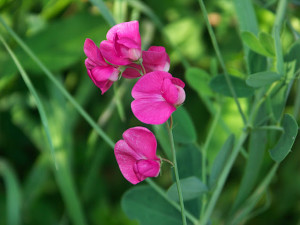
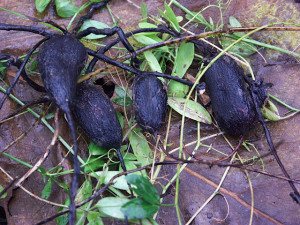
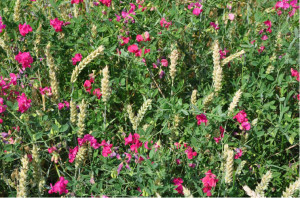
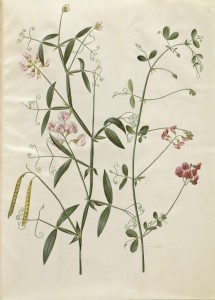
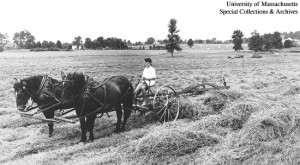

These amazing posts keep on coming. Thank you for sharing this most interesting information. I recently saw some of these gracing a beautiful garden and had NO idea why they would plant them in their garden. As permaculturalists they obviously knew more than I did about the value of this humble flower and its amazing hidden treasure. Cheers, again, for sharing 🙂
I love your articles! My son has gotten on the warpath for all invasive plants, for which I’m mostly very proud of him. The only time I get frustrated with him is when he insists that such plants are completely useless. Your posts help me to show him that they can be. Keep up the good work!
I can relate to your son’s attitude. It has been interesting to see my own attitude toward ‘invasives’ and ‘weeds’ change over time.
As a child, I was fascinated by all plants, and recall feeling that they must all have a ‘use’ – if only to the natural world – but gradually adopted the ‘us against them’ attitude of my elders: if a plant was not intentionally cultivated, its presence in field, pasture, or garden must be detrimental.
Then I learned that some weeds were edible; that many weeds ‘invading’ pastures (whether native or not) were useful and nutritious forage; and much later than some weeds of crops & gardens can actually assist those crop plants.
Though native, the last weed I hated, but admired for its beauty, scent, and importance to butterflies, but hated ‘stealing’ nutrients in my pasture was common milkweed. Then I realized its root zone was far below the grass roots. The grass grew up to its stem, and it did not shade out pasture grass species. When I learned that it provided me food from three separate parts three different times of the year – with no effort on my part but to first learn and then to pick – I was humbled.
The label ‘invasive’ is an interesting one, as many commercial crops, pasture & lawn grasses, commonly planted trees, shrubs, and ornamentals are not native, either. Of course we want to preserve native plant communities. But it often seems that the criteria for an ‘invasive’ is a useful plant that can manage without human help.
I recently heard that black locust trees are now classed as ‘invasive’ in Connecticut – apparently because they thrive on severely depleted soils where few other plants will, because they are nitrogen fixers. They can be considered a pioneer species that helps recover land after disturbance, making it more suitable for other species that will crowd it out as soil fertility returns. In the meantime, it is a fast growing tree that can provide fodder for livestock, naturally rot-resistent wood, (locust fence poosts are said to last longer than any species except osage orange) and a readily renewable source of quality firewood, as it resprouts from the roots when cut.
Green Deane’s articles are a breath of fresh air in this crazy world, eh?!
I started growing Lathyrus tuberosus in my garden last year, and am amazed as its speed of spreading! (The place I planted it is isolated by mowing and paths to (hopefully) prevent escape into the wild.)
The flowers and young tendrils look so deliciously like peas shoots, but I can’t find any information about their edibility. Anyone have a source that reports on toxicity in young tender growth and flowers of this species?
I have no references to the edibility of the young tendrils and flowers. The pea family is an iffy one, with edible members and very toxic members. Within the genus Lathyrus there are some species with edible seeds and others with toxic seeds. In others the roots are edible but in others toxic. There’s isn’t any “rhyme or reason” to it. Unless you can find a reliable source regarding the flowers and tendrils I would avoid them. As dainty as flowers can look they can make one very sick. I know this from personal experience. But I do have a suggestion. As this is a European native email the European foraging instructors on my site your question. They might have an answer.
I’ve been eating the tender growing tips of Lathyrus latifolius while hiking for many years and look forward to them annually as a treat. They taste almost exactly like the freshest, sweetest garden peas. While I eat them frequently in season I do not eat them in quantity on any given day. Just a brief grab and graze as I do with the nearby blackberries.
One source says even peas and young pods may be eaten, provided not in large quantity. ‘Boil in salted water with a dash of sugar. Cook until bright green and tender. Or, stir fry young pods with other vegetables.’
Crowhurst, A. The Weed Cookbook. Lancer Books, New York. 190 pp.
No representation of the edibility or proper identification of this species is being made by me. Do your own research.
We have some of those growing around here, they’re perennial, but they do not have much of a scent at all. They look exactly like the first picture, same color and everything. They love to grow on fences every where around here. Deer eat the stems and leaves sometimes. I’m guessing this is the same plant you are talking about, only ours don’t smell much during flowering.
My criterion (and that of environmental scientists) for “invasive” is a plant that kills native plants, chemically alters the soil, and destroys native ecosystems. If you’re wondering how such a useful, once-favored plant became hated as a weed, it’s probably that was valued in its native range, where it didn’t kill everything around it.
The fact is that if a non-native species can escape from cultivation, then its presence is incompatible with the long-term survival of most native plants. Invasive species are a major contributor to endangerment and extinction of species. Where they are present they do, eventually, literally kill absolutely everything native, including most of the animals that depend on native plants, as exemplified by the total replacement Midwestern prairie and savannah ecosystems with buckthorn monocultures.
If they can be controlled by eating them, that’s wonderful. But they should _never_ be deliberately spread.
Sadly, many people label every plant that they didn’t buy in a commercial store a “weed” no matter what, including all native species. Just as many gardeners want to eradicate every insect and mammal from their gardens, including the pollinators. The desire for exciting new exotics that are immune to all native insects and diseases seems to be a major motivation for people to continue introducing more and more killer invasives every year.
Are the leaves edible? Are they toxic?
If they were edible I would have mentioned it.